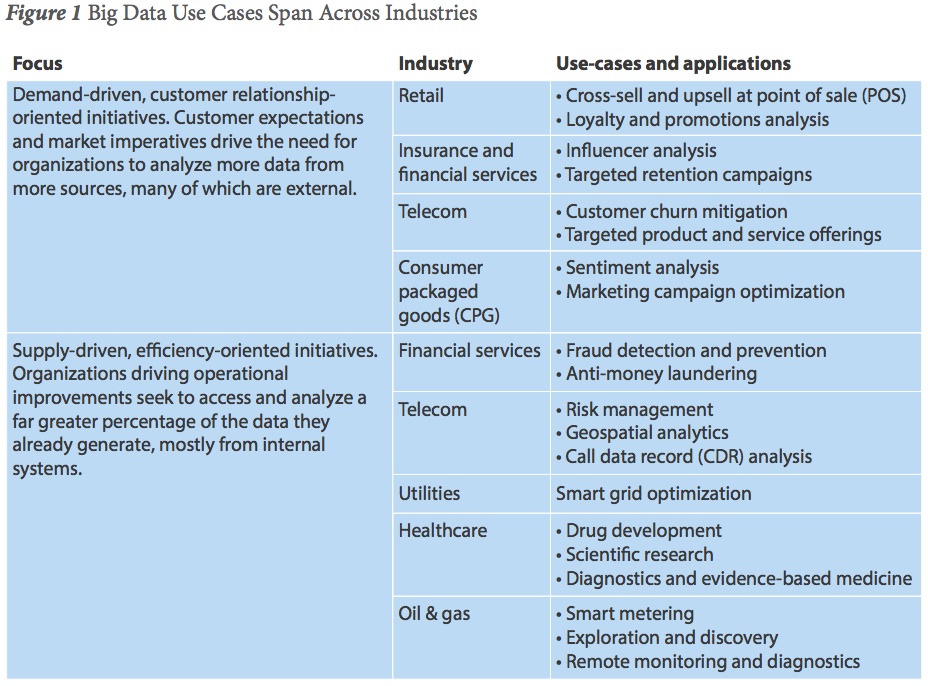As big data grows, so does the confusion it brings: Forrester
By Edwin Yapp February 15, 2013
- New study suggests big data still hyped up; APAC organizations still trying to comprehend what big data really is
- Firms must clearly define big data as business projects with technology support rather than the other way round
AFTER at least a year of big data awareness campaigns and publicity in the media by big money spending vendors, the term still brings with it a lot of hype, while its adoption will remain variable over the next two years, according to a new study from Forrester.
 In its recently released report, the analyst firm noted that while interest in big data is strong in Asia Pacific (APAC), vendor hype and a lack of big data understanding could drive “irrational exuberance and unreasonable expectations, potentially threatening the credibility of information technology if not properly managed.”
In its recently released report, the analyst firm noted that while interest in big data is strong in Asia Pacific (APAC), vendor hype and a lack of big data understanding could drive “irrational exuberance and unreasonable expectations, potentially threatening the credibility of information technology if not properly managed.”
Titled “Big Data Adoption Trends In Asia Pacific: 2013 To 2014,” and penned in January by vice presidents John Brand (pic, left) and Michael Barnes (pic, bottom right), the report states that certain markets and industry sectors in APAC have led the adoption of big data initiatives and that interest is strong across almost all sub-regions and verticals.
It also noted that general, cross-industry perceptions of the value of data in addressing customer demands and expectations are driving today’s interest in and adoption of big data in APAC, as is the pressure to respond to changing market dynamics and increase operational efficiency (click Fig 1 to enlarge).
(click Fig 1 to enlarge).
“The common link across all initiatives is an interest in using more types of data, from more sources, to enable timelier, better-informed insights,” the report noted. “In particular, two common use cases are driving awareness and investment across industries. They are: Demand-driven customer relationship-oriented initiatives; and supply-driven, efficiency-oriented initiatives.”
But while this may be so, the report also noted that the take-up of big data systems, solutions, and consulting services remains sporadic across the region; adoption and investment intentions at most organizations reflect their ongoing confusion over both the definition and value of big data (Click Fig 2 to enlarge).
The report noted that most APAC organizations are still trying to come to grips with what big data is — and whether it is truly different from traditional business intelligence (BI), analytics and data warehousing approaches.
“They are struggling to determine the real benefits and what the right approach to big data might be,” the analysts said. “Moreover, they are still considering what business challenges or opportunities big data systems can address.”
 Forrester also said that its research indicates that the vast majority of initiatives center primarily on building big data repositories, and secondarily on providing users with more advanced data discovery and visualization tools.
Forrester also said that its research indicates that the vast majority of initiatives center primarily on building big data repositories, and secondarily on providing users with more advanced data discovery and visualization tools.
[But] very few organizations currently intend to use big data systems to dynamically automate decision-making, for example, it added.
Tactical vs strategic
Another pertinent point raised by the survey is that organizations have been approaching big data from a tactical point of view rather than from a strategic perspective.
Noting that the most commonly cited business drivers for implementation of big data are increasing storage capacity and improving the performance of analytics and reporting, Forrester said while big data initiatives may gain a high profile and attention inside the organization, they may struggle to deliver long-term business value.
“The expectation from the business is that big data will drive revolutionary and transformative results, not simply incremental change,” the authors said.
In addition to this, Forrester said it expects many APAC organizations to start building the required infrastructure capabilities to facilitate big data without having any significant business use case or specific objectives in mind.
Rather than deploying a solution with clear business objectives in mind, many will simply build their capabilities and suggest ways that it might be used to add value, the analyst firm added.
 “Culturally and operationally, the majority of Asia Pacific organizations lack the maturity to reap the full potential benefits of big data,” the authors said.
“Culturally and operationally, the majority of Asia Pacific organizations lack the maturity to reap the full potential benefits of big data,” the authors said.
“They are more likely to see big data as a higher-performing alternative to traditional data warehousing rather than looking for entirely new use cases — reflected by the fact that they are more likely to view big data as an IT-driven project than a business initiative.
“Unless firms clearly define these initiatives as business projects with technology support rather than technology projects with some business support, the chances of success will be limited.”
The report also highlights several recommendations for vendors and advises them to temper expectations to ensure big data value delivery.
“Vendors must be clear about the value proposition of their solutions to help streamline purchase decision-making and reduce the friction within their customers’ procurement processes.
“To maintain market relevance, vendors must ensure that they deliver business value in the long term and that users perceive that their big data initiative is successful,” the report concluded.
(All charts provided courtesy of Forrester Research)
Related stories:
The driving power of big data for social business
Despite ‘overhype,’ market still upbeat on big data vendors
Big data picking up pace rapidly across Asia Pacific
Did big data analytics help Obama get re-elected?
For more technology news and the latest updates, follow @dnewsasia on Twitter or Like us on Facebook.


